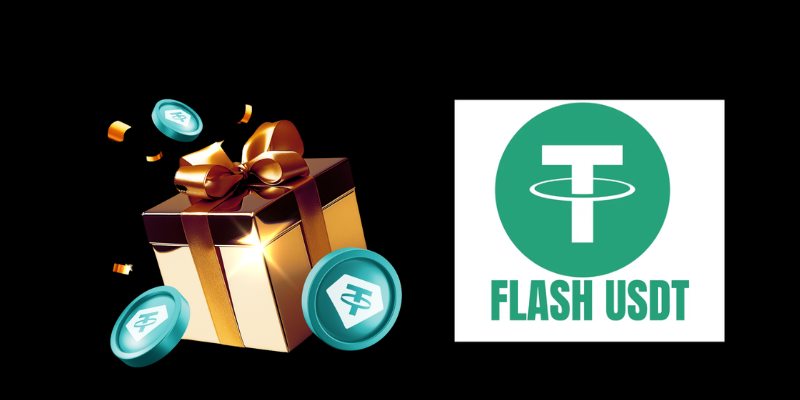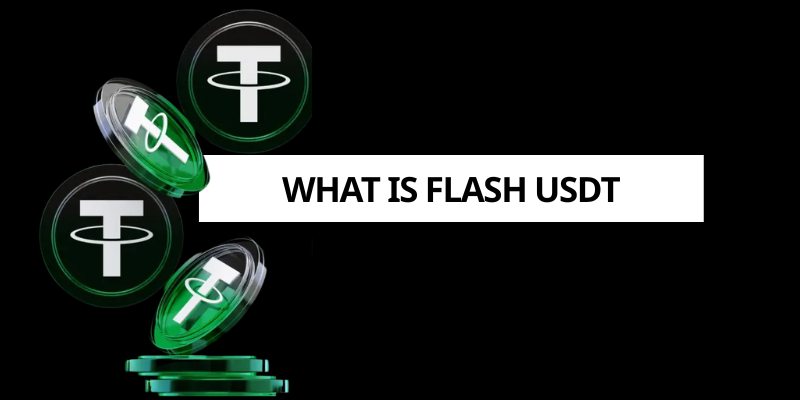What is Flash USDT? Decoding Its Role and Risks in the Crypto Ecosystem
In the dynamic world of cryptocurrency, new tools and concepts continually emerge, each promising to revolutionize transactions or trading. Among these is Flash USDT, a term that has captured attention for its purported ability to facilitate rapid, high-volume transactions. What is Flash USDT? Often described as a temporary, artificial version of Tether (USDT), Flash USDT mimics legitimate stablecoin transactions but lacks real backing, raising both intrigue and alarm.
Contents
The Essence of Flash USDT: How It Works
What is Flash USDT? Flash USDT, also known as “Fake USDT,” is a digital artifact generated by specialized software to simulate Tether (USDT) transactions on blockchain networks like TRC20, ERC20, or OMNI. Unlike genuine USDT, which is pegged to the U.S. dollar and backed by reserves, Flash USDT creates temporary wallet balances that appear as legitimate funds but expire after a set period, typically 38 to 90 days. These transactions are designed to be verified on blockchain explorers, enhancing their deceptive authenticity. Platforms like usdttools.com market Flash USDT for P2P transfers, trading, or staking, emphasizing speed and compatibility with wallets like Binance and MetaMask.

The mechanics of Flash USDT often involve flash loans, a DeFi tool allowing collateral-free borrowing and repayment within a single transaction block. By leveraging USDT’s stability, Flash USDT enables rapid arbitrage or liquidity demonstrations, appealing to traders in fast-moving markets like Solana’s, where the $TIME token on Raydium LaunchLab achieved a $5.2 million market cap within days of its April 15, 2025, launch. However, the artificial nature of Flash USDT—lacking real asset backing—positions it as a tool with questionable legitimacy, often exploited for fraudulent purposes.
Applications and Appeal
To understand what is Flash USDT, we must explore its claimed use cases. Proponents advertise Flash USDT for scenarios requiring instant liquidity, such as high-frequency trading, flash loans, or P2P transfers. Websites like flash-usdtsoftware.com claim that Flash USDT is “fully tradable, swappable, and transferable” across major exchanges, with durations up to 200 days. Such features align with the speculative fervor of meme coins like $TIME, which leveraged Raydium’s AMM to attract 13,298 buyers in 24 hours. Flash USDT’s appeal lies in its ability to simulate wealth or liquidity, enabling users to engage in transactions without traditional delays.
In practice, Flash USDT is often used to manipulate perceptions of financial capacity. For example, a trader might use Flash USDT to display a large balance on a P2P platform, enticing counterparties to trade real assets. This mirrors the community hype surrounding $TIME, where early investors like @Lesley_MMM saw potential in its low market cap. However, unlike $TIME, which operates on Solana’s verifiable blockchain, Flash USDT’s temporary balances are inherently unstable, making them a risky proposition.
The Scam Landscape
A critical component of what is Flash USDT is its role in scams. The Flash USDT scam, as detailed by cryptonews.net, involves scammers creating fake USDT transactions or balances to deceive victims into sending real assets, such as Bitcoin, in exchange. These schemes exploit blockchain’s irreversibility, leaving victims with worthless tokens once the scam is complete. Common tactics include fake transaction notifications, manipulated wallet balances, or requests for fees to “unlock” funds. Social media discussions on Reddit highlight user interest in Flash USDT software, but many warn of scams, with some labeling tools like “bitgen” as untrustworthy.
The $TIME token’s launch faced similar scrutiny, with X posts accusing it of “withdrawing hundreds of thousands from investors.” Both Flash USDT and $TIME underscore the crypto market’s vulnerability to hype-driven schemes, where transparency and verification are paramount. Investors must remain vigilant, as the promise of quick gains often masks significant risks.
Mitigating Risks and Moving Forward
What is Flash USDT if not a cautionary tale? Its temporary nature and lack of real backing make it a high-risk tool, particularly given its scam associations. Investors can protect themselves by verifying transactions on blockchain explorers like Tronscan, avoiding unverified software, and rejecting requests to pay fees for “unlocking” funds. Established platforms like Raydium, with its robust AMM and liquidity pools, offer safer avenues for trading tokens like $TIME, which, despite volatility, operates within a transparent framework.
Regulatory oversight may eventually curb Flash USDT’s misuse, as authorities crack down on fraudulent crypto practices. For now, users must prioritize due diligence, drawing lessons from speculative launches like $TIME, where community sentiment on X provided early warnings.

Conclusion
What is Flash USDT? It is a tool that promises rapid liquidity but often serves as a facade for scams, leveraging temporary USDT-like balances to deceive users. While its applications in flash loans or trading hold theoretical merit, the risks of financial loss and fraud loom large. The $TIME token on Raydium LaunchLab, despite its challenges, highlights the value of transparent blockchain ecosystems. By understanding what is Flash USDT, investors can navigate the crypto landscape with greater caution, prioritizing verifiable assets and platforms to safeguard their portfolios.